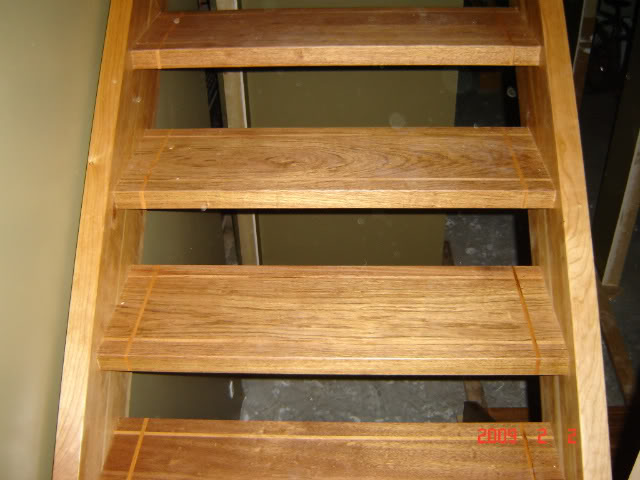Building Bee Hive Boxes
Bee hives are mass-produced at prices the small craftsman can't easily compete with. July 12, 2012
Question
I have the opportunity to make a lot of bee hive boxes if I can get the price to where it needs to be. I am looking at the best way to cut 3/4 wide finger joints in the cases. I know that the finger joints can be cut with the table saw. Does anyone have any other ideas on how to cut these any faster?
Forum Responses
(Cabinetmaking Forum)
From contributor W:
Have you looked at the Incra fence on a router table? The way they gang cut box joints could probably be duplicated by clamping a whole stack on edge and routing with a straight edge forty or fifty at a time.
From contributor G:
Have you taken a minute to look at the price of commercially-available bee hives? I'm a long-time beekeeper (honey badger, of course), and I'd be stunned if you can produce a hive body profitably at anywhere near current prices. It sure won't be with a table saw or an Incra fence on a router table. The last batch I ordered were great quality, fit together perfectly, and cost about what I'd pay for the materials alone.
From contributor O:
Beehive parts are produced on massive scales, and the finger joints are cut with a 16" wide hauncher. It takes about 1.5 seconds to do one end, with handling, about six seconds to do one part. There is no setup time to the hauncher once it is tooled. These are not poor quality, in fact they are of good quality. When I was asked about making hives many years ago, the slow cog was prime and paint. You need a 12" S4S molder, square end trim, hauncher, maybe a sander, small clamp presses and a paint line, at minimum.
From contributor G:
Which is probably why they're usually shipped unfinished and unassembled to keep the costs low. Some paint products are toxic to bees, even though the inside of the hive body is left unfinished, so it's important to choose safe finishing materials.
From contributor W:
My own hive supers shipped knocked down as well. Actually the ends were rabbeted and nailed to the end grain of the sides with box nails. I'm assuming the purchaser here wants box joints and is willing to pay the additional cost. I was not referring to using a router table, but the concept of clamping/ gang routing - kind of a long table with a high fence and a couple of long pipe clamps on the sides and a straight edge clamp on the ends with a router plate riding the clamp.
Again it is presumed the stock is S4S and cut to size. 8' table could process 16 pieces at a time and straight edge clamps come in 8' as well. Quick jig for aligning the straight edge and Bob's your uncle. Two setups, one for ends, one for sides, and you're making eight boxes at a time. Larger volumes would require larger facilities. Certainly not a concept for producing parts by the thousands without some major engineering and concomitant expense but one man could turn out enough box joints for 100 supers an hour I should expect.
Of course a standard 9-5/8" super retails for about $15 so if you are fabricating for re-sale there probably isn't much money in the process. If you are making hives for a beekeeper who wants box joints, there could be a tidy sum in there unless he wants tiny fingers on the box joints. Like any other commercial project, figure what you can reasonably produce, how much you want to pay yourself, and there's the price. If you can't make money at it, take a pass on the job.
From contributor G:
Unless you have access to very inexpensive labor, a really benevolent pine supplier, hideously low overhead, and no need for profit, I can't see how it works to compete with this. I built a few of my own hives with free labor and scrap material before realizing what a deal the premade boxes are!
From contributor G:
Stacking, clamping and routing 16 pieces at a time on both ends - 100 supers/hour? That's giving you 1.2 minutes per end, per gang of 16. That's one heck of a pace. Getting 16 pieces to arrange themselves for accurate clamping would take me that long!
From contributor W:
Bad choice of words there. I was referring to 100 ends an hour which would be 25 supers per. If you are paying yourself $50.00/hr that would be $2.00/super just for the joinery. The truing/cutting of lumber and material cost would have to be added to that. Still, depending on what part of the country you are operating in, $50/hr (loaded rate) is not too shabby.
From contributor G:
Its a more reasonable rate. Add the cost of seven bf of select pine (maybe $1/bf with a lot of luck and quantity?), sizing costs, QC checking, packing/wrapping, delivery/shipping, and I don't see where somebody's left with a profit.
From contributor H:
My next question would be; how are the suppliers able to sell these for $11.95? Are they made overseas, low labor cost? Where do they get materials? If you freight for "free" the money comes from somewhere.
From contributor G:
I'm pretty sure the boxes are made here, but that may have changed - their frames (the parts that fit into the hive) are now Asian. I think the price is a function of having a dedicated, highly automated facility and great suppliers who are forgoing a portion of their profit in light of high volume repeat business.
